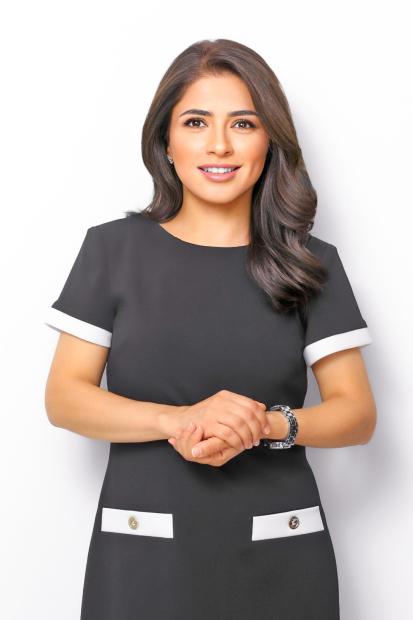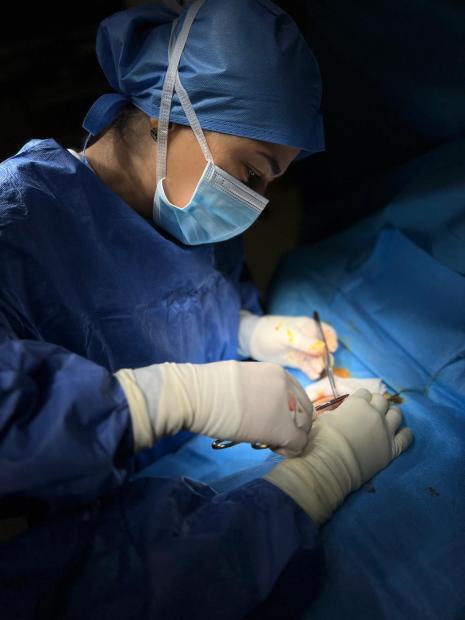Bahraini surgeon Dr Kameela Al Majed introduced a revolutionary technique for treating benign (non-cancerous) breast disease, at a leading surgical congress, highlighting the latest advancements in surgical care and research.
Her presentation, at the American College of Surgeons UAE Chapter Congress in Dubai, showcased a cutting-edge surgical method that enhances precision and improves cosmetic outcome, with clinical trials already showing remarkable success.
The innovative procedure uses a dye called Indocyanine Green (ICG), which lights up under an infrared camera, allowing surgeons to clearly identify and remove benign breast lesions, particularly fibroadenomas – the most common non-cancerous breast tumours in women worldwide.
Fibroadenomas are breast lumps made of fibrous and glandular tissue, often described as a hard, round, rubbery lump that moves easily under the skin. They occur most commonly in women aged between 15 and 35.
“This technique represents a shift in how we approach benign breast disease,” Dr Al Majed, a doctor in general and breast surgery at a clinic in Sanad, told the GDN.
“The dye is injected directly into the fibroadenoma under ultrasound guidance. Once absorbed, the lesion becomes visible in bright green on the screen, allowing the surgeon to better identify where the tumour is and make a small incision in the breast.
“The size of the lesion can vary, and there are challenges in dense breast for surgeons to locate, sometimes especially for small lesions.”
She explained that the technique focuses on two goals.
“First, it allows for more precise removal of the tumour while preserving healthy breast tissue. Second, it leads to better cosmetic results and patients’ satisfaction with quick recovery.
“This technique significantly reduces scarring, helping patients feel more confident after surgery. Many women worry about the cosmetic appearance or the size of the scar following breast surgery, but with this precise method, the result is much better, and sometimes not even noticeable.
“It also reduces complications from the surgery as it is a minimally invasive technique.”

Dr Al Majed
Dr Al Majed expressed gratitude for the partnership with the I M Sechenov First Moscow State Medical University (Sechenov University) Hospital No One, where the initial clinical trials were conducted with outstanding results.
“I am deeply grateful to the exceptional medical team at the university hospital for their invaluable collaboration and support in developing this technique,” she said, adding that she owed special thanks to her mentor and professor Igor Vladimirovich Reshetov, whose continued guidance and expertise have been instrumental throughout the journey.
“The opportunity to present this work at such a prestigious platform is both an honour and a responsibility. It allows us to share this innovation with colleagues across the region and potentially impact patient care on a broader scale.”
Looking ahead, she highlighted the method’s potential to improve outcomes in benign breast surgery has already generated significant interest among surgical colleagues and medical institutions.
Dr Al Majed also emphasised the crucial support received locally.

Another shot of the procedure
“I extend my heartfelt appreciation to consultant general and breast surgeon Dr Suhair Al Saad in Bahrain for her unwavering support.
“While the technique shows tremendous promise, we are committed to ensuring that surgeons receive appropriate training and that protocols are standardised to maintain the high success rates we’ve achieved,” she added.
The clinical series conducted at the prestigious Moscow institution demonstrated remarkable results, with 100 per cent successful excision rates, enhanced cosmetic outcomes, and less post-operative complications, positioning the technique for broader clinical adoption and established new benchmarks for fibroadenoma treatment.
julia@gdnmedia.bh

.jpg?20251015')
&uuid=(email))